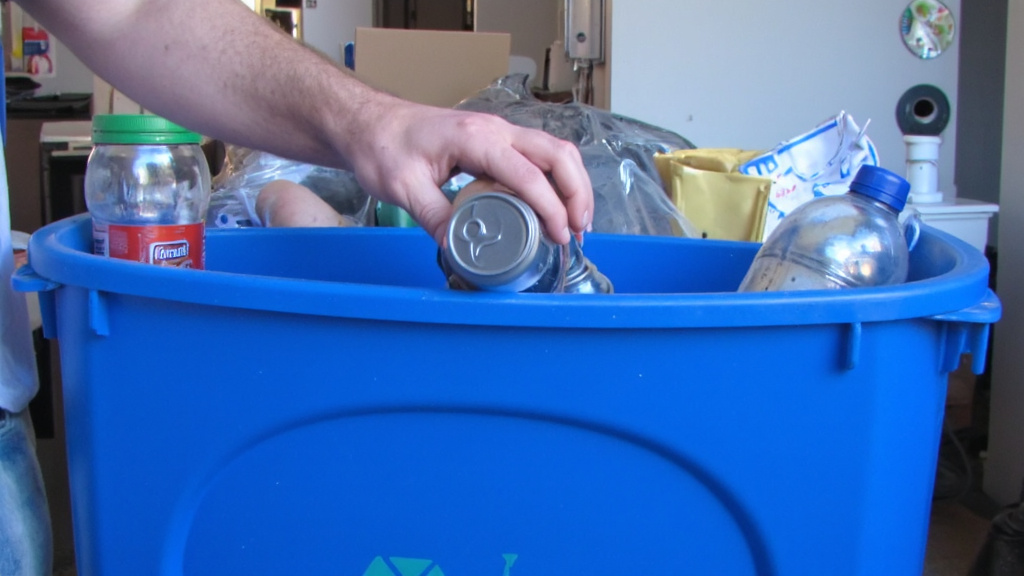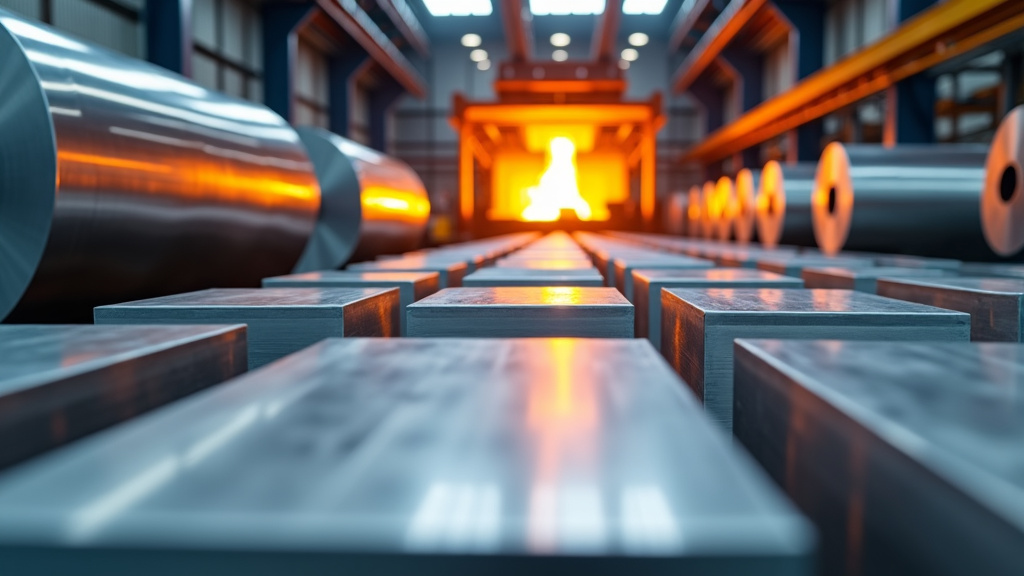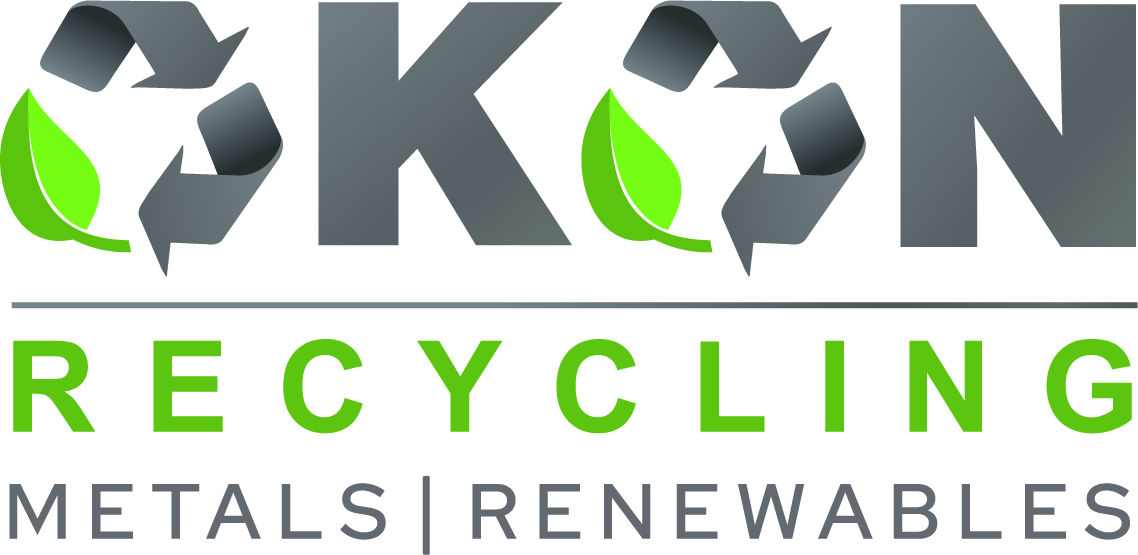5901 Botham Jean Blvd, Dallas, TX 75215
How to Prepare Aluminum for Recycling: An Introduction
April 19, 2025That aluminum can in your hand represents more than just a convenient beverage container—it’s a remarkable resource with nearly infinite recycling potential.
Unlike many materials that degrade when recycled, aluminum maintains its quality through endless recycling cycles, making it one of our most sustainable metals. In fact, recycling aluminum saves an astonishing 95% of the energy required to produce new aluminum from raw bauxite ore.
The journey of recycled aluminum begins with proper preparation, a critical first step that ensures this valuable metal re-enters the production cycle efficiently. From the moment aluminum items are placed in recycling bins to their eventual transformation into new products, each stage of the process plays a vital role in maximizing recovery and minimizing environmental impact.
Let’s explore the fundamental concepts behind aluminum recycling and why proper preparation matters.
What Are the Initial Steps in Preparing Aluminum for Recycling?

The collection of aluminum materials marks the beginning of the recycling journey. Households, businesses, and public facilities separate aluminum items from other waste and place them in designated recycling bins. These bins are specifically marked for metal recycling, helping ensure the quality of materials collected.
Once collected, these materials are transported to processing facilities via specialized recycling trucks. Transportation logistics play a crucial role in the efficiency of aluminum recycling programs, connecting collection points to processing centers where the real transformation begins.
At the processing plants, aluminum undergoes initial sorting to separate it from other recyclables. Manual sorting by trained workers removes obvious non-aluminum items, while magnetic separation efficiently removes ferrous metals from the mix. Aluminum, being non-magnetic, passes through this process unaffected.
More advanced facilities employ eddy current separation technology, which uses magnetic fields to create electric currents in aluminum pieces. This causes the aluminum to be repelled from other materials, making separation more precise and efficient. The process allows for handling large volumes of mixed recyclables while maintaining high separation accuracy.
Before further processing, the sorted aluminum must be thoroughly cleaned. Any residual food, liquids, or contaminants are removed through washing processes. Clean aluminum is essential for producing high-quality recycled material, as impurities can compromise the integrity of the final product.
The next critical preparation step involves shredding or crushing the clean aluminum into smaller pieces. Special machines like hammer crushers and rotary shredders break down aluminum cans, foil, and other items into small fragments. This increases surface area relative to volume, which accelerates the chemical and thermal reactions in subsequent recycling stages.
By following these initial preparation steps meticulously, recycling facilities ensure that aluminum maintains its quality throughout the recycling process. Each step—from collection to shredding—plays a vital role in transforming used aluminum into valuable raw material that can be reprocessed with minimal quality loss.
How is Aluminum Processed at Recycling Facilities?
When aluminum arrives at recycling facilities, it embarks on a remarkable transformation journey. The process begins with sorting, where aluminum is separated from other materials using magnetic separators and eddy current technology that efficiently identifies this non-magnetic metal from the waste stream.
Once properly segregated, the aluminum undergoes shredding and crushing. These compact forms make transportation and handling more efficient while preparing the material for the next crucial step. The crushed aluminum is thoroughly cleaned to remove paints, coatings, and other contaminants that could compromise the quality of the recycled product.
The heart of aluminum recycling happens in large industrial furnaces where the metal is melted at approximately 1,400°F (760°C). This temperature transforms solid aluminum into a molten state, effectively erasing its previous form while preserving its inherent properties. During this melting phase, impurities rise to the surface as dross, which is skimmed off to ensure purity.
After melting comes purification, where various chemical processes remove remaining impurities to achieve the desired quality standards. The molten aluminum is then cast into ingots, large blocks that serve as the raw material for manufacturing new products. These ingots are later rolled into sheets or formed into various shapes depending on their intended use.
The efficiency of this process is remarkable—from collection bin to store shelf in as little as six weeks. This rapid turnaround demonstrates aluminum’s position as one of the most efficiently recycled materials in our waste stream. The energy saved through recycling versus producing new aluminum from bauxite ore is substantial, with recycled aluminum requiring only about 5% of the energy needed for primary production.
What makes aluminum particularly valuable in the circular economy is that it maintains its properties indefinitely. Unlike some materials that degrade with each recycling cycle, aluminum can be recycled infinitely without losing quality, making it an ideal material for sustainable manufacturing practices.
What Types of Products Can Be Made from Recycled Aluminum?

Recycled aluminum serves as a versatile material that finds its way into numerous industries and applications. The metal’s durability and malleability make it ideal for manufacturing various products without compromising quality. From everyday items to industrial components, recycled aluminum creates a sustainable loop in product development.
One of the most common and visible applications of recycled aluminum is the production of new beverage containers. The process begins with collecting and sorting aluminum cans, which are then melted down into aluminum slabs. These slabs are subsequently rolled to produce can stock—thin sheets that serve as the foundation for new cans. Manufacturers then shape these sheets, add protective internal coatings, and apply labels before they’re filled with beverages and distributed to consumers.
Beyond beverage packaging, recycled aluminum plays a crucial role in automotive manufacturing. Vehicle components such as engine parts, wheel rims, and body panels frequently incorporate recycled aluminum, reducing both weight and environmental impact. The automotive industry’s growing emphasis on fuel efficiency has made aluminum’s lightweight properties particularly valuable in recent years.
The construction sector represents another significant market for recycled aluminum products. Window frames, door systems, and structural elements benefit from aluminum’s corrosion resistance and strength-to-weight ratio. Modern buildings often feature aluminum facades, roofing, and interior elements that may contain substantial percentages of recycled content.
Household goods and furniture also utilize recycled aluminum extensively. From kitchen utensils and appliances to outdoor furniture frames, the metal provides durability while maintaining a relatively light weight. Its resistance to rust makes it especially suitable for items exposed to moisture or outdoor conditions.
Electronics and technology products incorporate recycled aluminum in casings, heat sinks, and internal components. Major technology companies have increasingly emphasized the use of recycled materials in their product designs, with aluminum being a primary focus due to its excellent conductivity and aesthetic appeal.
The electrical industry relies on recycled aluminum for power transmission lines and cables due to its conductivity properties. While copper has traditionally dominated this sector, aluminum provides a more cost-effective alternative with comparable performance characteristics when properly designed.
Even the aerospace industry, with its stringent material requirements, utilizes recycled aluminum in certain applications. Though virgin aluminum remains essential for critical components, recycled aluminum can be incorporated into less demanding parts, contributing to sustainability efforts in a notoriously resource-intensive field.
Conclusion: The Impact of Preparing Aluminum for Recycling
Preparing aluminum for recycling represents one of the most significant contributions individuals and businesses can make to environmental sustainability. This process conserves valuable resources by reducing the need for bauxite mining and saves up to 95% of the energy required for primary aluminum production.
The economic benefits are equally impressive, with the potential to save billions in energy costs across the global aluminum industry while minimizing waste that would otherwise occupy landfill space.
The true power of aluminum recycling lies in its infinite recyclability without quality degradation, making it the ideal material for a circular economy. By understanding and participating in proper aluminum preparation for recycling, we all become critical partners in creating a more sustainable future.
For expert guidance on implementing effective recycling programs or to learn more about maximizing the value of your aluminum recycling, contact Okon Recycling at 214-717-4083.
